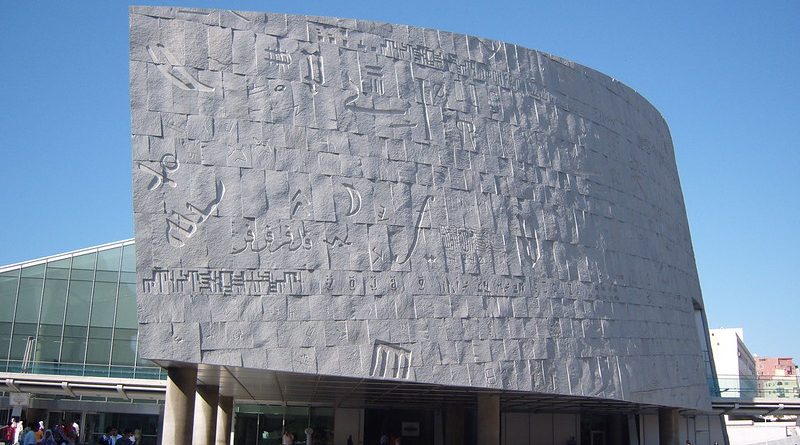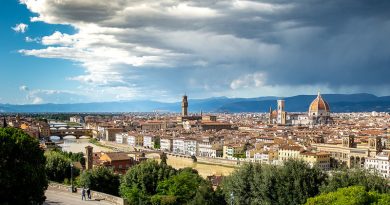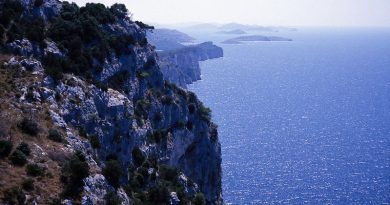Top Ten Sites in Alexandria
One of Egypt’s most significant urban centres in modern times, Alexandria has a rich, extensive history dating back to around 300 BC. Founded by its namesake Alexander the Great, Alexandria was a prominent urban centre whilst Egypt was under Hellenistic, Byzantine and Muslim rule. Although a number of the city’s major sites, such as the Lighthouse of Alexandria, have been lost to the ravages of time, there are still several relics of the city’s long history intact today, which give an idea of its cultural and historical richness.
Catacombs of Kom El Shoqafa
Perhaps the city’s most notable archaeological site, the Catacombs of Kom El Shoqafa are often considered to be one of the Seven Wonders of the Middle Ages. A vast necropolis dating back to the 2nd Century, the catacombs contain a number of sarcophagi dating from a number of different periods. While the tombs have clearly Egyptian influences, the contents also contain Hellenistic and Imperial Roman aspects. Whilst little is known about the identities of those buried within the necropolis, the catacombs give an idea of the many different cultures, which called Alexandria home over the many centuries of its existence.
Bibliotheca Alexandrina
A new institution established in the early 21st Century, the Bibliotheca Alexandrina is the city’s most vital modern cultural institution. In addition to the main library, the Bibliotheca contains a plethora of other specialised museums, including the Manuscript Museum, the Science Museum and the Antiquities Museum as well as a Planetarium and a rotating selection of exhibitions. The Bibliotheca Alexandrina is a tribute to the city’s ancient library, which was the largest of its kind during its lifetime and a major intellectual centre of the ancient world. This library, established by Ptolemy I Soter, the successor of Alexander the Great, was famously destroyed in a fire. The newer library pays tribute to its predecessor’s importance as a major cultural and intellectual centre.
Royal Jewellery Museum
One of the city’s lesser-known museums based in the Zizenzia area, the Royal Jewellery Museum is located in a former palace. As its name suggests, the museum boasts an extensive jewellery collection, mainly from the recent Muhammad Ali dynasty of the 19th and 20th Centuries. The museum also holds a number of artworks from the period of the dynasty while guided tours offer visitors insight into the history of the dynasty. Informative and filled with visual feasts, the Royal Jewellery Museum is a hidden gem of the city.
Montazah Palace Gardens
One of the city’s most distinct and eye-catching buildings, Montazah Palace is one of the most iconic relics of 19th Century Alexandria. Built in 1892 towards the end of the Muhammad Ali Dynasty, the opulent palace is complimented by its desirable location along the shores of the Mediterranean Sea. Its architecture boasts Moorish, Ottoman and Renaissance influences. While the Palace’s interior is not open to the general public, its striking exterior remains a sight to behold. Furthermore, the ample gardens which flank the palace are amongst the city’s lushest green spaces and worth a visit alone.
Alexandria National Museum
Having previously functioned as a palace and as the United States Consulate, the Alexandria National Museum was converted into a museum at the beginning of the 21st Century in 2003. Despite its relative newness, the museum has quickly emerged as one of the finest in Egypt, dedicated to physical relics of the country’s extensive history. Home to thousands of artefacts, the museum’s contents are drawn from a number of different periods although its main specialisations are Ancient Egyptian, Coptic and Muslim artefacts. A particularly versatile collection, the museum is not to be missed by enthusiasts of the country’s history.
Serapeum of Alexandria
The city’s most notable ancient ruins, the Serapeum date back to the Hellenistic Period. A former Ancient Greek temple built by Ptolemy III Euergetes of the 3rd Century BCE. Little of the site remains intact due to heavy damage sustained through vandalism and plundering, a mob of Christian revolters in 391 causing particularly significant destruction. Despite the sparse remains still remaining today, the site is a major historical site and visitors can still access the Serapeum’s subterranean chamber. Many of the artefacts are housed in Alexandria’s Greco-Roman Museum, which is also worth visiting.
Abu al-Abbas al-Mursi Mosque
The city’s most well-known and spectacular mosque. It was initially built at the end of the 18th Century upon the remains of its Spanish namesake, a 13th Century scholar and saint. The mosque has been regularly restored since its initial construction in 1775. It is known for its grandiose interior and intricately-detailed white exterior.
Citadel of Qaitbay
One of the city’s most impressive historical sites, the Citadel of Qaitbay is located on the former site of the famous Lighthouse of Alexandria. Dating back to 1477, the fortress played a significant role in defending the city’s attackers due to its key positioning along the Mediterranean Coast. Built initially during Muslim rule over Egypt, it was expanded during Ottoman rule under the Muhammad Ali dynasty in the 19th Century. The site’s military function effectively ended during the Urabi Revolt of 1879-1882, when it sustained significant damage by British military forces. Neglected for many years, the museum has since been converted into a maritime museum.
Souq District
One of the city’s most bustling areas, the Souq District is a large open-air market area and one of the best ways to tap into the city’s atmosphere and culture. The market doesn’t have a clear specialisation, with a number of cafes and retailers specialising in local couture. Fast-paced but certainly worth a visit.
Ras el-Tin Palace
Another key site built during the Muhammed Ali Dynasty, the Ras el-TIn Palace was built during the 1830s at the peak of the dynasty’s powers. Bearing the distinction of the oldest palace in the country, which is still functional, the building functioned as the President’s official residence for a number of years. In modern times, the building functions as a naval base. While it is not open to the general public, the building is one of the city’s most spectacular structures and worth seeing.
Destination – Egypt




